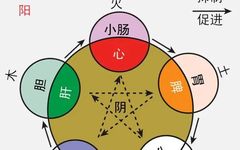The theory of the Five Elements, like the theory of Yin and Yang, originated in ancient China. In ancient times, people believed that Wood, Fire, Earth, Metal, and Water were essential elements in daily life and production, and they are also the five fundamental elements that constitute the normal changes in nature. 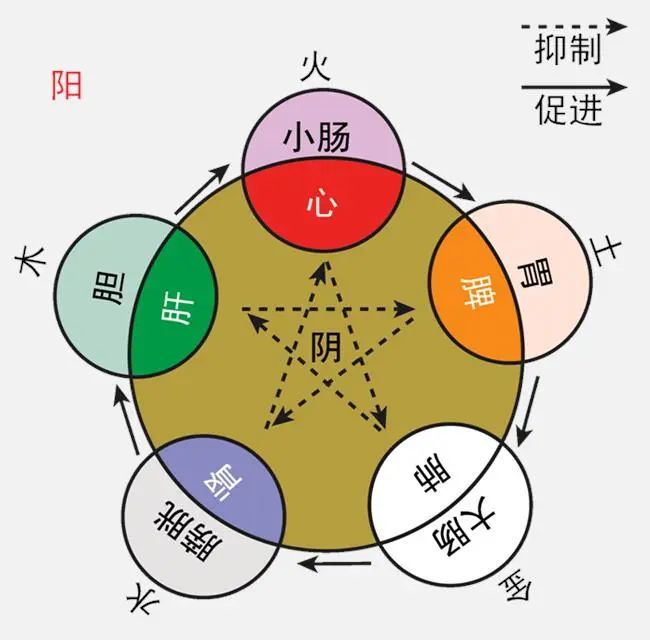
For example, Water and Fire are necessary for people’s diet, Metal and Wood can be made into various tools, and Earth can give rise to all things. These elements are interconnected and interact with each other, gradually forming the theory of the Five Elements.
 By focusing on these 4 points, you will have mastered the knowledge of the Five Elements! 1. Meaning 2. Attributes of the Five Elements 3. Interactions of the Five Elements 4. Applications in Medicine
By focusing on these 4 points, you will have mastered the knowledge of the Five Elements! 1. Meaning 2. Attributes of the Five Elements 3. Interactions of the Five Elements 4. Applications in Medicine
Meaning of the Five Elements
“Five” refers to the five types of substances in nature: Wood, Fire, Earth, Metal, and Water; “Elements” refers to movement and change; The Five Elements refer to the movement and changes of these five types of substances and their relationships with each other. The theory of the Five Elements posits that everything in the world is derived from these five basic substances and that they maintain overall coordination and balance through continuous mutual generation and restriction.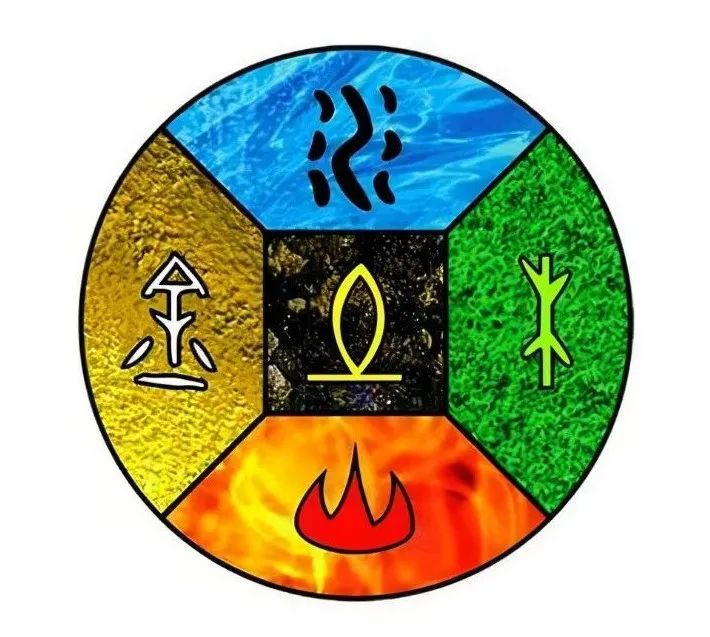
Classification of the Attributes of the Five Elements
Regarding the characteristics of the Five Elements, people first recognized the original properties of the five substances in nature: Water is moist and downward, Fire is hot and upward, Wood can bend and straighten, Metal can transform, and Earth can sow and harvest.
To explain and illustrate more properties of things, people further abstracted and extended the characteristics of the Five Elements, giving them broader meanings. For example, bending and straightening, growth, rising, and comfort all belong to the characteristics of Wood;
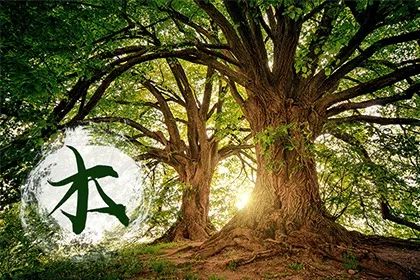
Warmth, rising, and brightness all belong to the characteristics of Fire;
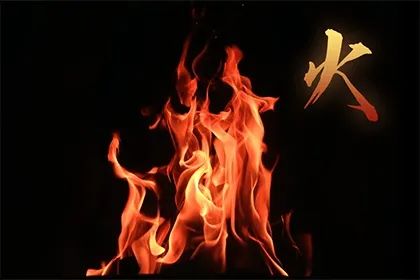
Acceptance, bearing, and transformation all belong to the characteristics of Earth;

Transformation, killing, and convergence all belong to the characteristics of Metal;
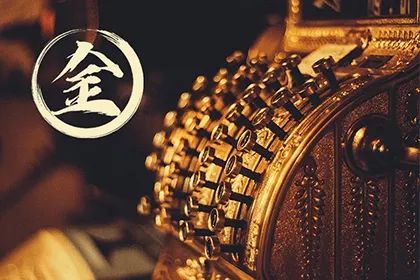
Moistening, downward, cold, and hidden all belong to the characteristics of Water.


For example, in terms of China’s geographical environment:

The sun rises in the east, similar to the rising characteristic of Wood, thus the east belongs to Wood;
The southern climate is hot, similar to the warm characteristic of Fire, thus the south belongs to Fire;
The west has many high mountains and cold terrain, similar to the killing characteristic of Metal, thus the west belongs to Metal;
The northern climate is cold, with much ice and snow, and the earth is hidden, similar to the cold and hidden characteristics of Water, thus the north belongs to Water;
The central plains of China have a temperate climate and abundant resources, similar to the generative characteristic of Earth, thus the center belongs to Earth.
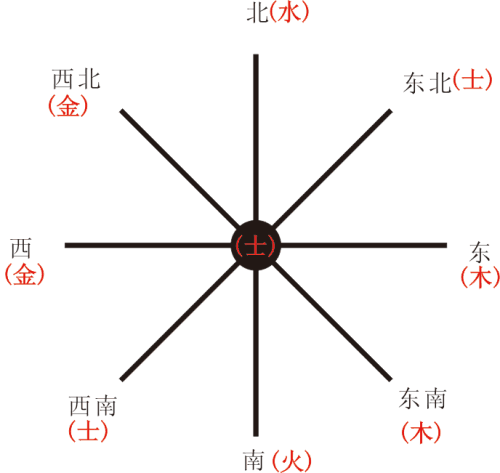
In spring, Yang energy gradually rises, the weather is mild, and all things sprout, similar to the expansive and generative characteristic of Wood, thus spring belongs to Wood;
In summer, the climate is hot, and all things flourish, similar to the hot and rising characteristic of Fire, thus summer belongs to Fire;
In autumn, Yang energy declines, and all things wither, similar to the converging and killing characteristic of Metal, thus autumn belongs to Metal;
In winter, the climate is cold, and all things hide, similar to the cold and hidden characteristic of Water, thus winter belongs to Water.
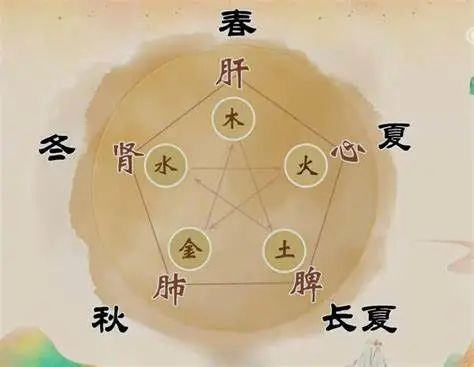
For example, the physiological characteristic of the liver is to prefer smoothness, which is similar to the comfort characteristic of Wood, thus the liver’s Five Element attribute is Wood;
However, the gallbladder, tendons, and eyes cannot be directly compared to the characteristics of the Five Elements, but these organs are closely related to the liver, thus they are classified under Wood.
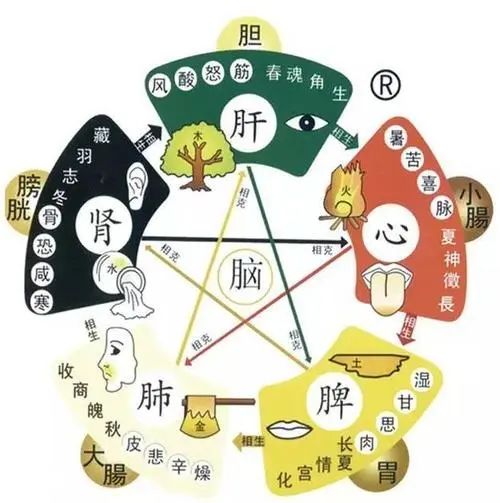
Therefore, the theoretical framework of Traditional Chinese Medicine classifies and deduces various phenomena in nature and the organs, tissues, and systems of the human body according to their different attributes, categorizing them into the Five Elements of Wood, Fire, Earth, Metal, and Water, thus forming a Five Element structural system that connects the internal and external environments of the human body.
The main content of the Five Element structural system includes the Five Tastes, Five Colors, Five Transformations, Five Qi, Five Directions, Five Seasons, and the Five Organs, Five Bowels, Five Senses, Five Bodies, Five Emotions, Five Fluids, and Five Meridians in the human body. We summarize the correspondence of the above content with the Five Elements into the “Five Element Structural System Table” as follows.


Interactions Among the Five Elements
Each of the Five Elements has its characteristics and interacts with one another. The mutual generation and mutual restriction of the Five Elements are normal interactions, while the mutual multiplication and mutual insult are abnormal manifestations of the restriction.
(1) Mutual Generation and Mutual Restriction of the Five Elements
1. Mutual Generation
Mutual generation refers to the promoting and nurturing effect one element has on another. The order of mutual generation among the Five Elements is arranged according to certain rules, forming a cyclic generation loop: Wood generates Fire, Fire generates Earth, Earth generates Metal, Metal generates Water, Water generates Wood. Since the element that generates me is my “mother,” and the element that I generate is my “child,” the relationship of mutual generation among the Five Elements is also called the mother-child relationship.
For example, in the case of Fire, the generating element is Wood, and the generated element is Earth, thus Wood is called the mother of Fire, and Earth is called the child of Fire.

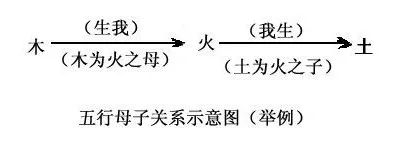
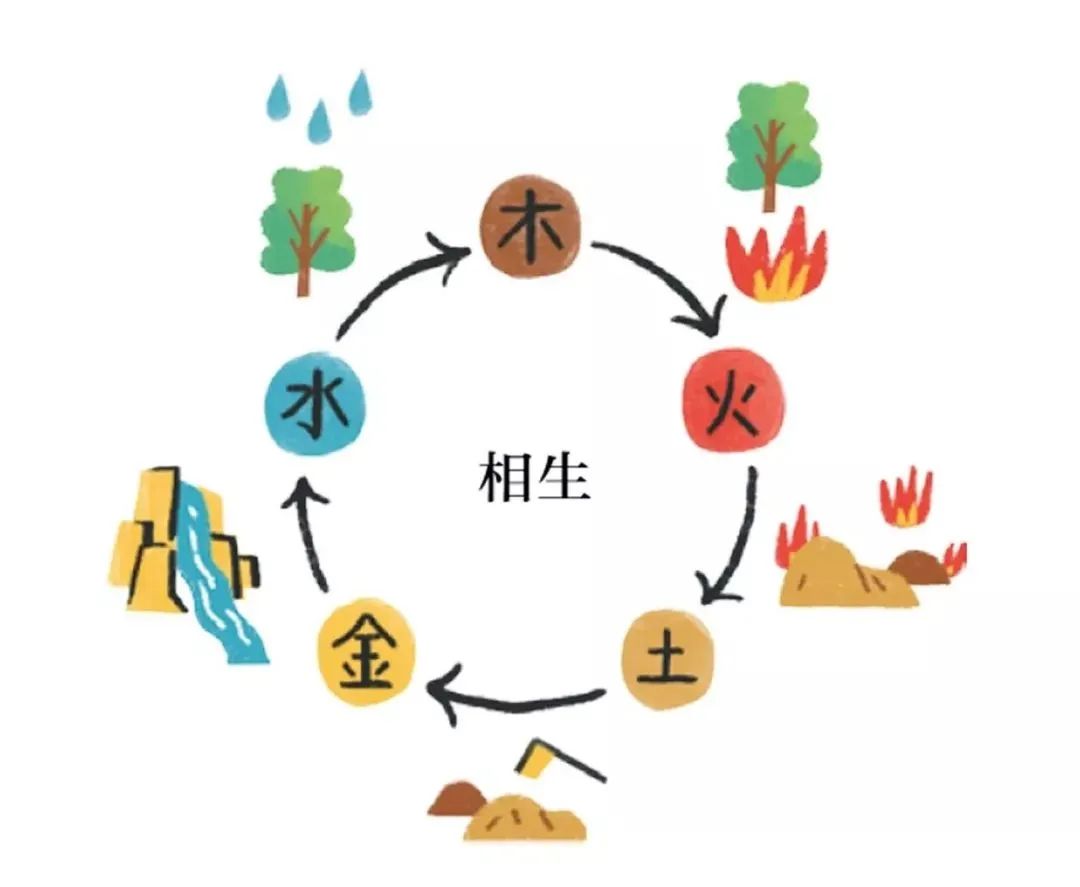
2. Mutual Restriction
Mutual restriction refers to the restraining effect one element has on another.
The order also follows certain rules, forming a cyclic restriction loop: Wood restricts Earth, Earth restricts Water, Water restricts Fire, Fire restricts Metal, Metal restricts Wood. Since the element that restricts me is my “opponent,” and the element that I restrict is my “victim,” the relationship of mutual restriction among the Five Elements is also called the “victor-victim relationship.” For example, in the case of Water, the restricting element is Earth, and the restricted element is Fire, thus Earth is called the victor over Water, and Fire is called the victim of Water.


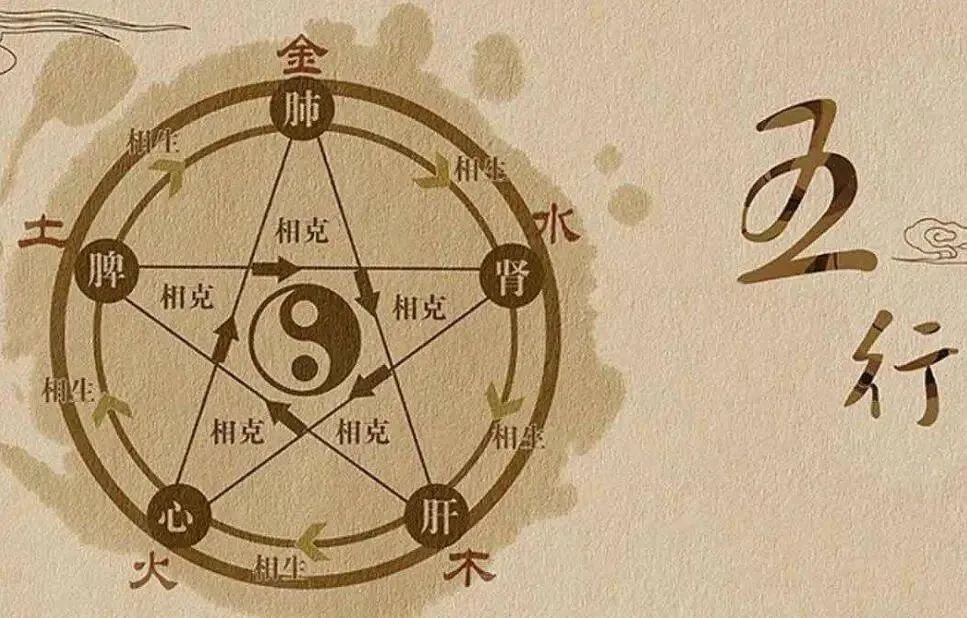
3. Relationship Between Mutual Generation and Mutual Restriction
The mutual generation and mutual restriction of the Five Elements are inseparable aspects. Without generation, there can be no occurrence and growth of things; without restriction, it is impossible to prevent the harm caused by excessive development. Therefore, only when there is generation within restriction and restriction within generation can the normal development and changes of things be maintained, as well as their balanced and coordinated state. There is also a mutual restraining relationship between mutual generation and mutual restriction, meaning that the generating effect can prevent the adverse effects caused by excessive restriction, and the restricting effect can also restrain the harm caused by excessive generation. For example, Wood can restrict Earth, and Earth can generate Metal, which in turn restricts Wood; if Wood is too strong, it excessively restricts Earth, causing harm to it, but the Metal generated by Earth restrains Wood, thus protecting Earth. Similarly, Wood can only generate Fire under the normal restriction of Metal; if Wood generates Fire excessively, the Fire energy becomes strong, and the restriction of Metal on Wood weakens, thus reducing the generating effect of Wood on Fire. This way, the internal automatic adjustment of the Five Element system is achieved through the mutual generation and restriction.
(2) Mutual Multiplication and Mutual Insult
1. Mutual Multiplication
Mutual multiplication refers to the excessive restriction that disrupts the normal coordination between elements. The order of mutual multiplication is consistent with that of mutual restriction: Wood multiplies Earth, Earth multiplies Water, Water multiplies Fire, Fire multiplies Metal, Metal multiplies Wood.
The causes of mutual multiplication can be twofold:
One is that an element in the Five Elements becomes excessive, leading to excessive restriction on the “victor” element, thus disrupting the normal restriction relationship between the two. For example, if Wood is strong, it multiplies Earth, and if Water is abundant, it multiplies Fire.
The second is that an element in the Five Elements becomes deficient, causing excessive restriction on the “victim” element, thus disrupting the normal restriction relationship. For example, if Earth is deficient, Wood multiplies, and if Water is deficient, Earth multiplies.
2. Mutual Insult
Mutual insult refers to any element in the Five Elements being excessive, causing the originally restricting element to not only fail to restrain it but instead be restricted by it, also known as “reverse restriction” or “reverse insult.” The order of mutual insult is the opposite of that of mutual restriction: Wood insults Metal, Metal insults Fire, Fire insults Water, Water insults Earth, Earth insults Wood.
The causes of mutual insult can also be twofold:
One is that an element in the Five Elements becomes excessive, leading to reverse restriction on the “victim” element, causing an abnormal restriction relationship. For example, if Wood is strong, it insults Metal, and if Fire is excessive, it insults Water.
The second is that an element in the Five Elements becomes deficient, leading to reverse restriction from the “victor” element, causing an abnormal restriction relationship. For example, if Metal is deficient, it is insulted by Wood, and if Earth is deficient, it is insulted by Water.
Additionally, the abnormality of the mutual generation relationship is called “mother-child interaction.” In this case, the mother can affect the child, and the order is consistent with that of mutual generation; while the child can affect the mother, and the order is the opposite of that of mutual generation.

Applications of the Five Element Theory in Traditional Chinese Medicine
(1) To Explain the Physiological Characteristics and Interrelationships of the Five Organs
The Five Element theory uses the characteristics of the Five Elements to explain the physiological characteristics and functional features of the Five Organs, categorizing each organ under one of the Five Elements.
For example, Wood is expansive and rising, the liver prefers smoothness and dislikes depression, thus the liver belongs to Wood;
Fire is warm and rises, the heart Yang can warm the whole body, thus the heart belongs to Fire;
Earth is receptive and transformative, the spleen governs the transformation of food essence, being the source of Qi and blood, thus the spleen belongs to Earth;
Metal is restrictive and converging, the lung Qi is internal and orderly, thus the lung belongs to Metal;
Water is moist and hidden, the kidney stores essence and governs the metabolism of fluids, thus the kidney belongs to Water.
The internal connections between the functional activities of the Five Organs also reflect the relationships of mutual generation and mutual restriction.
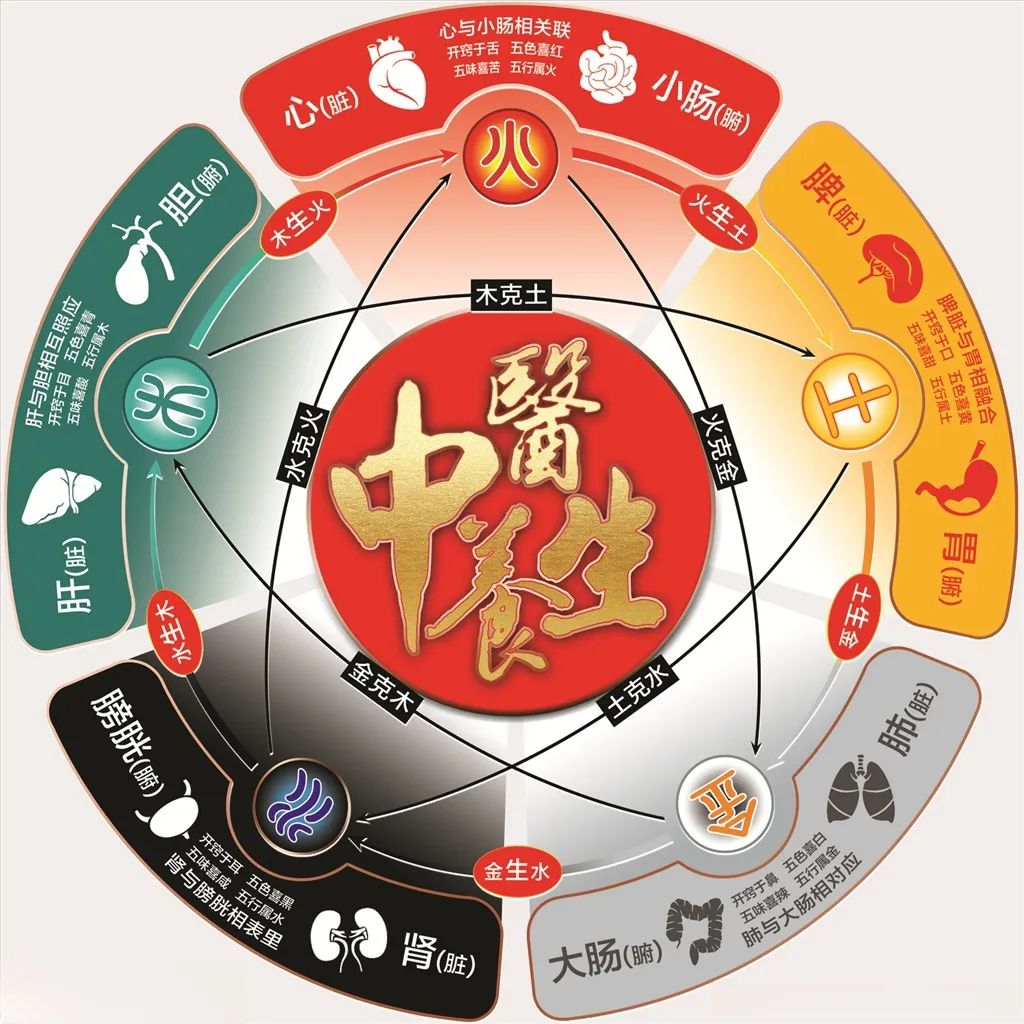
In terms of mutual generation:
Wood generates Fire, corresponding to the liver generating the heart, indicating that liver blood can nourish the heart spirit;
Fire generates Earth, corresponding to the heart generating the spleen, indicating that the heart spirit can regulate the spleen’s transformation function;
Earth generates Metal, corresponding to the spleen generating the lung, indicating that the spleen’s transformation of food essence can nourish the lung;
Metal generates Water, corresponding to the lung generating the kidney, indicating that the lung’s governing of descent is beneficial to the kidney’s function of receiving Qi;
Water generates Wood, corresponding to the kidney generating the liver, indicating that kidney Yin can nourish liver Yin.

In terms of mutual restriction:
Wood restricts Earth, corresponding to the liver restricting the spleen, indicating that smooth liver Qi can relieve the stagnation of spleen Earth, allowing the spleen’s transformation function to operate normally;
Earth restricts Water, corresponding to the spleen restricting the kidney, indicating that the spleen’s transformation of fluids can prevent kidney water from overflowing and causing edema;
Water restricts Fire, corresponding to the kidney restricting the heart, indicating that sufficient kidney Yin can support the heart and restrain excessive heart fire;
Fire restricts Metal, corresponding to the heart restricting the lung, indicating that heart Yang can warm and suppress excessive lung Qi descent;
Metal restricts Wood, corresponding to the lung restricting the liver, indicating that the lung’s descending Qi can restrain liver Qi, preventing excessive rising of liver Qi and causing chaos.
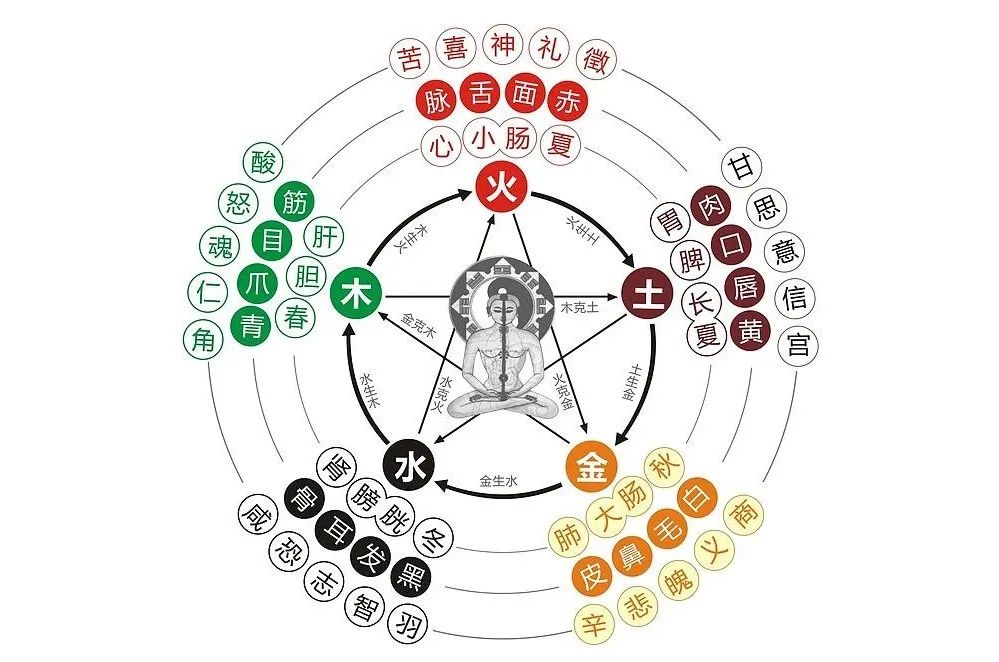
(2) To Explain the Interactions of Pathological Changes Among the Five Organs
The human body is an organic whole, and the Five Organs not only coordinate and cooperate in physiological functions but also influence each other pathologically. This means that a disease in one organ can affect other internal organs, including aspects of mutual multiplication, mutual insult, and mother-child interactions.
Mutual multiplication refers to disease transmission caused by excessive restriction, following the same order as mutual restriction. For example, if liver Qi is stagnant and invades the spleen, the spleen Qi is restricted, leading to a decline in its function.
Mutual insult refers to disease transmission caused by reverse restriction, following the opposite order of mutual restriction. For example, if the lung originally restricts the liver, but if liver fire is excessive and invades the lung, it can lead to the lung losing its ability to clear.
Mother disease affecting child refers to disease transmission from the mother organ to the child organ, following the same order as mutual generation. For example, if liver fire is excessive, it can affect the heart, leading to excessive heart fire, which is a manifestation of mother disease affecting child.
Child disease affecting mother refers to disease transmission from the child organ to the mother organ, following the opposite order of mutual generation. For example, if liver Yin is deficient for a long time and affects the kidney, leading to kidney Yin deficiency, this is an example of child disease affecting mother, also known as “child stealing mother Qi.”
(3) For Disease Diagnosis
Since the Five Organs belong to the Five Elements, and the Five Colors, Five Tastes, and Five Pulses are all inherently connected to the Five Organs, diseases in the internal organs can also reflect on the surface of the body. Therefore, the Five Element theory can be applied to analyze changes in facial color, taste, pulse, etc., to infer the attributes of the affected organs and meridians, thus diagnosing diseases.
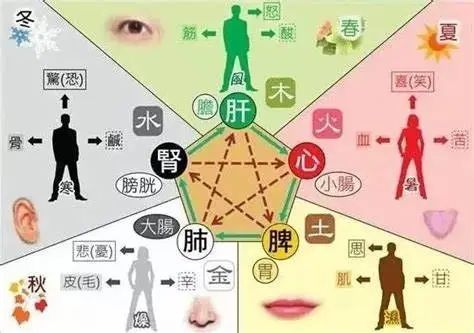
1. Diagnosing Diseases Based on Color, Taste, and Pulse
The Five Colors, Five Tastes, and Five Pulses correspond to the liver, heart, spleen, lung, and kidney, respectively, and can be directly used for diagnosing diseases of the Five Organs.
For example, a blue complexion, preference for sour taste, or sour taste in the mouth, with a stringy pulse, can be diagnosed as liver disease;
A red complexion, bitter taste, and a surging pulse can be diagnosed as heart disease;
A yellow complexion, sweet taste, and a slow pulse can be diagnosed as spleen disease;
A white complexion, spicy taste, and a floating pulse can be diagnosed as lung disease;
A black complexion, salty taste, and a sinking pulse can be diagnosed as kidney disease.
2. Judging Disease Transmission Based on Color, Taste, and Pulse
If the patient’s responses in color, taste, and pulse do not align with the attributes of the affected organs, it indicates that disease transmission has occurred among the Five Organs. The Five Element theory can be used to analyze this transmission.
For example, in a patient with spleen deficiency, if the expected yellow complexion, sweet taste, and slow pulse associated with the spleen are absent, but instead, the patient presents with a blue complexion, sour taste, and stringy pulse associated with the liver, it indicates that the cause of the spleen disease is due to liver disease transmission to the spleen, i.e., Wood multiplying Earth;
Similarly, in a patient with lung disease, if the expected white complexion, spicy taste, and floating pulse associated with the lung are absent, but instead, the patient presents with a red complexion, bitter taste, and surging pulse associated with the heart, it indicates that the cause of the lung disease is due to heart disease transmission to the lung, i.e., Fire multiplying Metal.
Of course, using the Five Element theory to diagnose diseases is just one of the clinical diagnostic methods. It must also be combined with other diagnostic methods such as Yin-Yang, organ manifestations, Qi, blood, and body fluids to truly grasp the essence of the disease and make accurate judgments.
(4) For Disease Treatment
The application of the Five Element theory in disease treatment mainly focuses on controlling disease transmission and determining treatment principles.
1. Controlling Disease Transmission
Based on the theories of mutual multiplication, mutual insult, and mother-child interactions, the pathological changes among the Five Organs can influence and transmit to each other. Therefore, in clinical treatment, in addition to directly treating the affected organ, it is also necessary to consider the potentially affected organs and take early preventive measures to control disease transmission.
However, when applying this, two points should be noted: first, choose the organs that are easily affected for treatment.
For example, according to the Five Element theory, liver disease can transmit to the heart, lung, spleen, and kidney, but in clinical practice, the organ most easily affected is the spleen, so preventive treatment measures for the spleen should be considered first.
Second, treatment should be based on the functional status of the organs. Although liver disease can easily transmit to the spleen, whether it actually transmits depends on the spleen’s functional status.
If the spleen Qi is sufficient and its function is sound, it will be less susceptible to the liver’s pathogenic influence, and no treatment for the spleen is needed; if the spleen is weak and cannot resist the pathogenic influence from the liver, it will lead to disease transmission, and at this point, strengthening the spleen is necessary to prevent transmission.
2. Determining Treatment Principles
The treatment principle determined by the mutual generation relationship is called “nourish the mother and drain the child.”
Nourishing the mother is a treatment principle applied in cases of deficiency, also known as “when deficient, nourish the mother.”
For example, if kidney Yin is insufficient, leading to liver wood being unable to nourish liver Yin, one can use methods to nourish kidney Yin to support liver Yin, as the kidney is the mother of the liver. By nourishing kidney water, the purpose of generating liver wood can be achieved, hence this treatment method is called “nourishing water to cover wood.”
Draining the child is a treatment principle applied in cases of excess, also known as “when excessive, drain the child.”
For example, if liver fire is excessive and there is no restriction from the heart, leading to excessive heart fire, one can use methods to drain the heart, as the heart is the child of the liver. By draining heart fire, the purpose of lowering liver fire can be achieved.
The treatment principle determined by the mutual restriction relationship is called “restrain the strong and support the weak.”
Restraining the strong mainly involves draining methods; supporting the weak mainly involves nourishing methods.
Therefore, the principle of restraining the strong and supporting the weak often employs a combination of attacking and nourishing methods. For example, if liver Qi is stagnant and invades the spleen, and the spleen Qi is weak and susceptible to the liver’s influence, then for the condition of liver Qi invading the spleen, one can adopt methods to restrain Wood and support Earth (also known as restraining liver and supporting spleen), thus simultaneously draining liver Qi and nourishing spleen Qi, achieving harmony between liver and spleen, leading to the resolution of spleen disease.
Students who like this material remember to click below to 【book a live session】~
Save and follow to not miss any updates~
(Invite your friends to exercise together, they will appreciate you) Thank you for your support!Reprinted from Traditional Chinese Medicine EncyclopediaThe images in this article are from the internet

